

Tektronix, the measurement insight company committed to performance and compelled by possibilities, celebrates its 75th anniversary of operations. Already well established as a supplier of high-quality test instrumentation in the United States, Tektronix saw the potential of expanding in Europe in the 1950s. With the advent of NATO in 1949 and increasing prosperity as the continent shook off the effects of the Second World War, the European market was ripe for test instruments to serve the growing electronics industry.
In 1958, the company decided to set up a manufacturing and development presence in the region, establishing its first manufacturing plant in Europe with the opening of a facility in Guernsey, followed by manufacturing operations in 1959.
A desire to gain a foothold in Europe’s burgeoning Common Market saw the company purchase its first piece of land in the Netherlands in 1960. Tektronix NV began manufacturing at Heerenveen in the Netherlands in 1962, the same year Tektronix launched its first digital readout oscilloscope.
In 1964, a 17-year-old electronics Technician named Gerrit DeVries started work in Heerenveen. “I worked on testing and calibrating the large 540 Series of static oscilloscopes which used vacuum tubes and ceramic strips instead of printed circuit boards,” he recalls.
“When I started, I was told that managers liked to be called by their first names,” says Gerrit. “As a 17-year-old this was different to what I expected and made me feel at home.”
The early 1960s were a time of great change in technology, with integrated circuits revolutionizing markets as diverse as consumer electronics and aerospace.
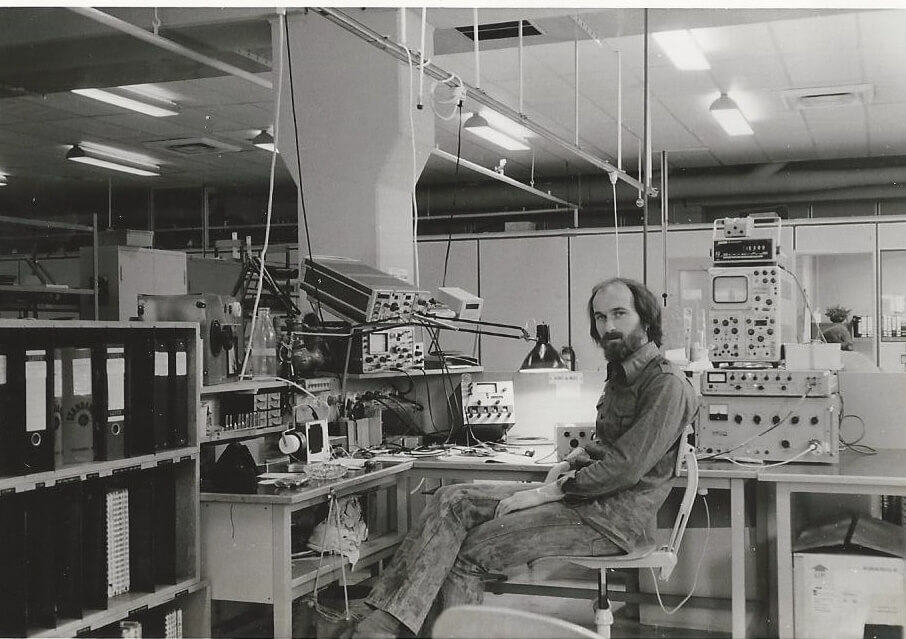
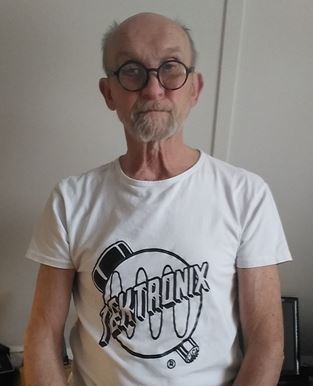
Gerrit DeVries in 2021.
At the same time, Tektronix was pushing ahead with advanced oscilloscopes that could analyze gigahertz frequencies, a step way beyond the 50MHz range common in the early 1960s – with customers’ products getting faster, Tektronix listened to customers and developed equipment that could meet current challenges while being flexible enough to handle future needs.
Rapid European expansion
On New Year’s Day in 1964, Tektronix UK opened in Harpenden, Hertfordshire, with 27 employees and two orders on the first day to kick off the new era – one from Hughes International at Glenrothes for a 575 Transistor Curve Tracer, and one from B.T.R. Limited at Taplow for a 545A Oscilloscope and a CA plugin.
It was the height of the Cold War and the widening of the Vietnam war and an increasing reliance by military forces on electronics and ‘smart weapons.’ Tektronix developed the first portable spectrum analyzer and the first video bandwidth portable oscilloscope to bring more flexibility to developing these advanced systems.
The 1970s saw the development of electronic inventions that still affect our lives today. From email and cell phones to digital cameras and video games, Tektronix solutions helped bring about the consumer electronics revolution. The technology that so effectively made the world smaller and more connected through the 1980s were met at the end of that decade by the fall of the Berlin Wall and a period of economic and cultural openness that Tektronix continues to help advance today.
The revolutionary changes of the early 1990s led Tektronix to work with a new partner previously out of reach during the days of the Iron Curtain – solutions provider Tespol of Poland.
“Things changed overnight in Poland, from the government controlling everything to letting companies get on with running themselves,” says Michal Ossowski of Tespol. “We have seen great growth since then and Tespol and Tektronix can be said to have created the Polish test and measurement market - when I think about Tektronix, I think about quality.”
Back in Heerenveen, Gerrit DeVries was continuing to build on his career as the company expanded into new products and serve new markets. “I worked on some of the first test instruments to make large scale use of microprocessors,” says Gerrit, reflecting on the transformative work of the late 1980s. “I am proud that some of my design solutions are still in use today.”
After 35 years in engineering, Gerrit spent the last few years of his time with the company managing a service depot center situated in the European Logistic Centre. “By the time I left the company in 1999, Tektronix could provide service to its European customers across the length and breadth of the continent,” says Gerrit.
A foot in the past, an eye on the future
Oscilloscopes remain a fundamental part of the Tektronix portfolio, with solutions to suit any application or customer, from everyday bench scopes to high performance oscilloscopes able to capture signals up to 70 GHz. Tektronix has also developed new ranges of instrumentation and equipment, including analyzers, signal generators, power supplies and meters, all to help engineers produce advanced new solutions.
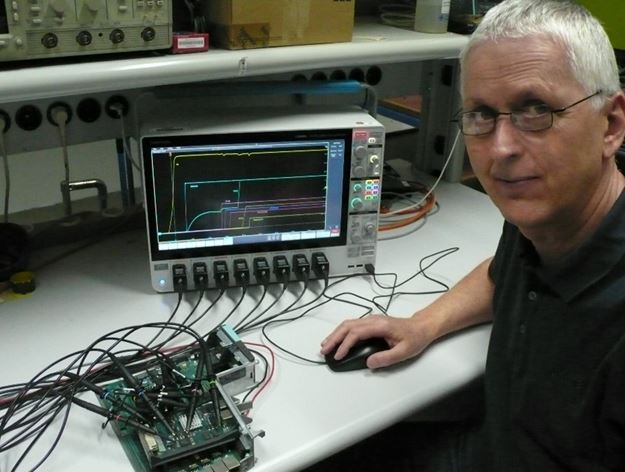
Take, for example, the 5 Series MSO with eight FlexChannel™ inputs, developed in 2017, which helped the Siemens engineering lab in Erlangen, Germany, develop automation technology and test the power up and power down sequencing of processor systems and peripherals. “My colleagues are impressed by how simple it is to use,” says Siemens electronic design engineer Stefan Grönbeck. “Everything can be found without much explanation and feels comfortable to use.”
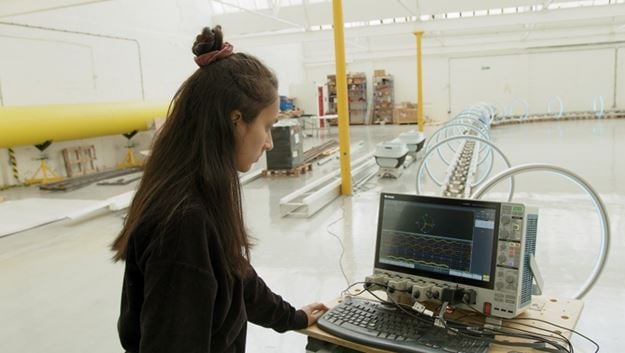
Tektronix is also helping revolutionize the future of distribution to a lower carbon future. London-based startup Magway is developing a system to deliver parcels and goods through a network of underground pipes across the UK, using a series of small carriages running on rails. To test their solutions, they use a Tektronix 8 channel MSO58 8 Mixed Signal Oscilloscope along with 3-Phase Inverter, Motor and Drive Analysis software with DQ0 measurements and current, as well as high voltage differential probes.
“Our head project engineer and some of the other engineers have been using the Tektronix oscilloscope on every one of the motors and drives on the track and it has been an incredibly useful tool for this,” says Aanchal Mittal, an innovation engineer at Magway.
But Tektronix knows the future of engineering is not only at startups and innovative companies.
“We are very intentional about our work with university labs, where student curiosity and high-end research and development are finding solutions to define a new generation of engineering,” says Maria Heriz, vice president for Europe, Middle East, Africa and India for Tektronix.
Tektronix is currently researching 6G wireless solutions with Wuppertal University, outfitting students at Coventry University for in-person and remote electrical engineering curriculum, and equipping University of Modena (Italy) with Tektronix IsoVu probes to investigate high-speed computer transitions.
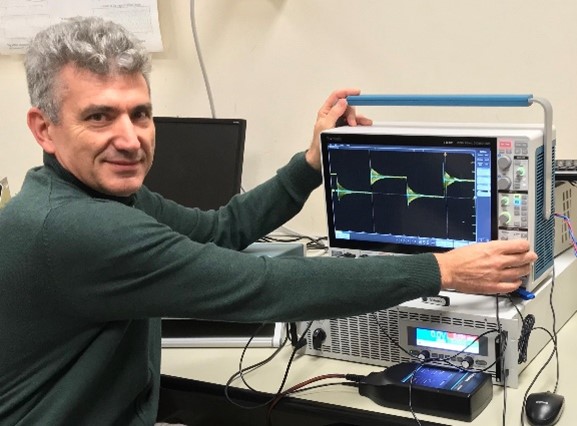
“Only the Tektronix equipment could give us visibility of fast gradient signal impact on insulation,” says professor Giovanni Franceschini of the University of Modena.
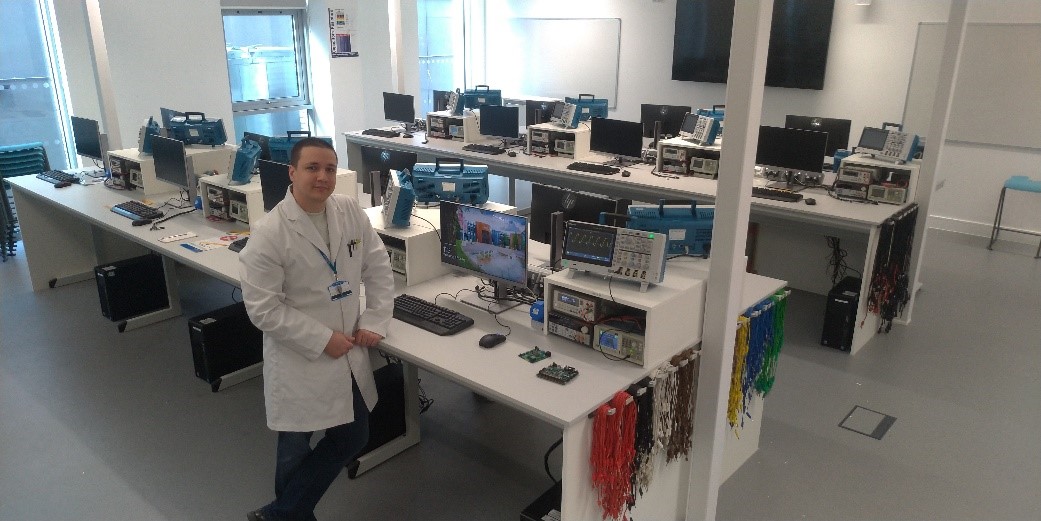
Looking at 53 seats of advanced workstations for first- and second-year students to perform an extensive range of practical electronics and physics experiments, Nik Tsanov, development officer Electronics) for Coventry University, says, “I have no doubt that collaborating with Tektronix to kit out our facilities with such high-quality equipment will help us take the faculty’s offering to a whole new level.”
All of these products are supported by an extensive suite of services, covering calibration, asset management and repair, ensuring that Tektronix customers always have the best support to go with high quality equipment.
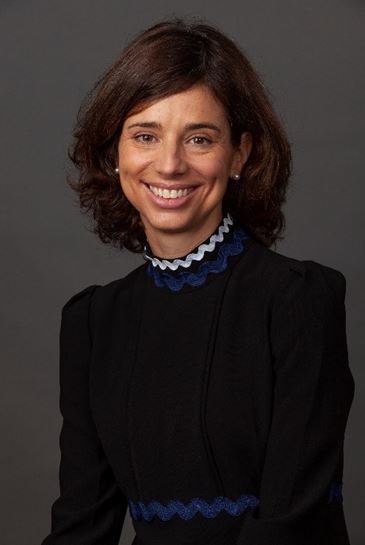
Maria Heriz
Vice President, Commercial Operations, EMEAI, Tektronix
“I’m proud of the Tektronix heritage, which leans into the present and into the future of engineering”, says Maria. “There are many great examples of how our products and expert knowledge enable our customers to take the next step into the future of technology and I am also proud of how we, an international organization, managed to listen to customer needs over the decades and respond swiftly.
“After all these decades, we are continuing to support the future of engineering with innovation - we are truly for the engineer.”
Tektronix Timeline of European Expansion:
- 1947: The first Tektronix 511 oscilloscope is sold to the University of Oregon Medical School for about $800
- 1948: International sales begin in Sweden (to L.M. Ericsson Telephone Company).
- 1950s: Tektronix enables the first video tape recorder and the advent of color TV, going on to win seven Emmy Awards for its contributions to broadcasting and television
- 1958: First Tektronix manufacturing plant opens in Europe in Guernsey
- 1960s-1970s: Helps NASA achieve the Apollo moon landing, IBM design mainframe
computers and wireless companies develop the cell phone. - 1962: Tektronix NV begins manufacturing at Heerenveen in the Netherlands
- 1964: Tektronix UK opens
- 1970: Tektronix Sweden opens
- 1971: Tektronix SA opens in Belgium
- 1973: Tektronix is involved in computer-to-computer communication testing with IBM and university labs. The ARPANET tests were the forerunner to today’s Internet.
- 1972: Benelux Regional Center opens
- 1978: Scandinavian Operations Center, as well as offices in Finland and Norway
- A European Marketing Center was opened in Amstelveen, Netherlands
- Spain office opens
- 1979: Tektronix S.P.A. opens in Italy.
- 1981: Tektronix GmbH opens in Germany
- 1990s: Tektronix work in memory and power enables ever smaller and more energy efficient data centers and devices, helping drive massive adoption of mobile phone technology.
- 2007:Danaher Corp. purchases Tektronix for approximately $2.8 billion.
- 2010:Tektronix acquires Keithley lnstruments.
- 2016:Fortive Corp. spins off from Danaher, uniting industrial and test and measurement companies under the Everett, Washington based company.
- 2019: Releases TekDrive™, the first cloud-based platform that allows engineers to share and collaborate on data directly from their oscilloscope to the cloud.
- 2020: Tektronix helps produce emergency ventilators at the start of the COVID-19 pandemic and launches a partnership with Germany’s Wuppertal University on research and development of 6G wireless.


